Energy & Natural Resources Report

At a Glance
- More investors are considering the energy transition and other ESG issues in their investment decisions. We asked 89 energy investors (45 focused on utilities and 44 on oil and gas) how these factors affect their portfolios.
- Investors are bullish on the utilities sector. They see electrification as a growth opportunity, and they want management teams to capture the moment.
- Despite the recent rise of oil and gas prices, investors are more restrained about the long-term prospects for that sector. They want management teams to continue generating cash and exercising capital discipline.
- Many investors are considering using carbon emissions limits, reduction targets, or ESG rankings to guide their portfolio decisions in the future.
This article is part of Bain’s Energy and Natural Resources Report 2022
With changes in capital markets coming to the forefront of executive agendas, we and our partner Rivel, an investor research firm, recently interviewed 89 investors and analysts about how the energy transition is shaping investment decisions in the energy sector.
We found that the transition is squarely at the center of the agenda for investors, and that it shapes perspectives on individual companies as well as sectors. As a result, the “to dos” for executive teams in utilities and in oil and gas are very different.
For all companies, we found that environmental, social, and corporate governance (ESG) goals are important, and every company must bring a compelling story to the table. Investors expect companies to reduce carbon emissions, particularly the Scope 1 and 2 emissions that they largely control. Most of the investors we spoke with aren’t placing fixed limits or exclusions in portfolios on the basis of their carbon emissions, but that could change.
Ensuring that strategy—and the execution of the strategy—remains aligned with evolving capital market expectations is a critical and increasingly central task for executive teams.
Investor perspectives on utilities
Electrification plays a leading role in achieving a net-zero future, and utilities worldwide stand to benefit from ample investment opportunities (see Figure 1). Investors and analysts believe in the long-term growth potential of the utilities sector, and they’re looking for management teams with the strategy and execution capabilities to capture the moment.
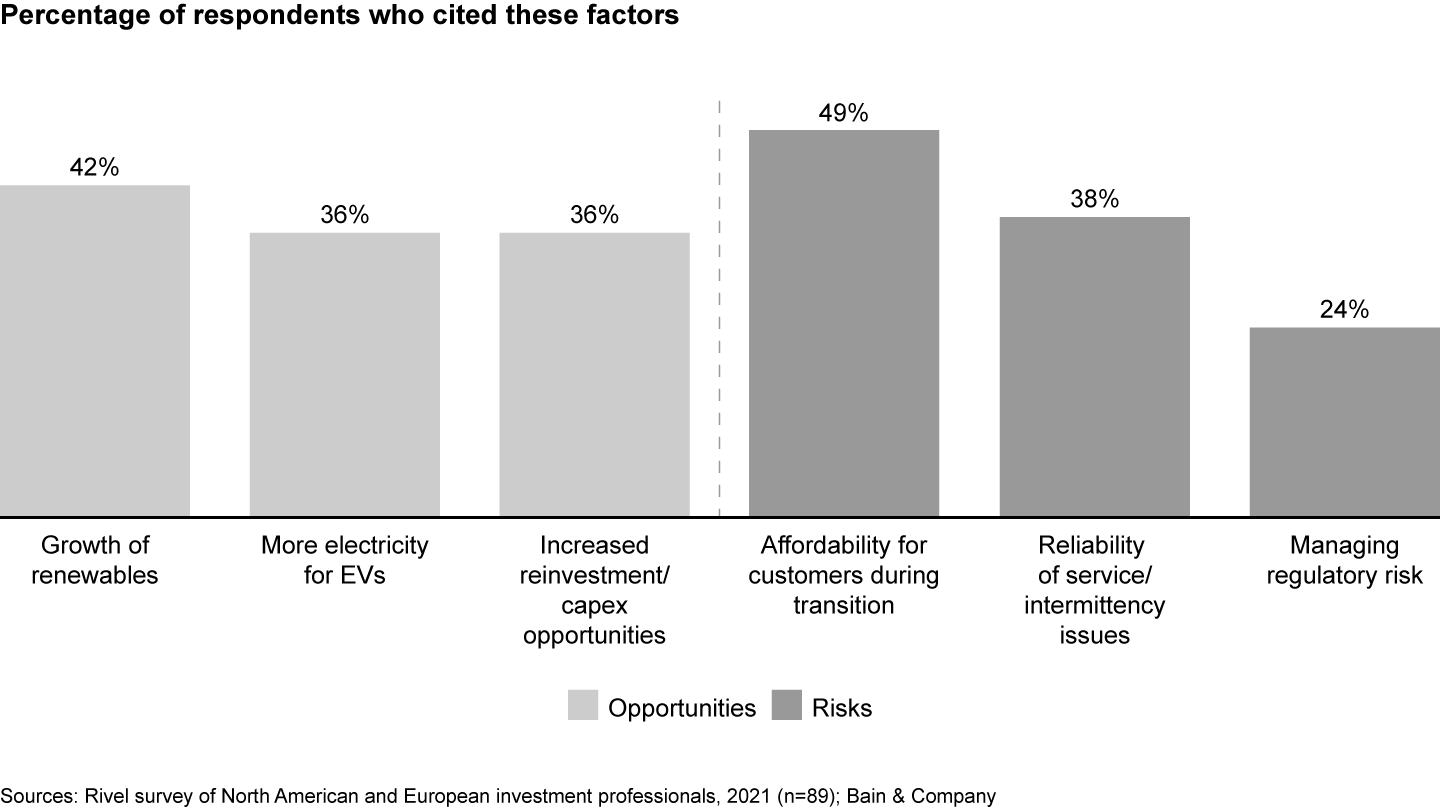
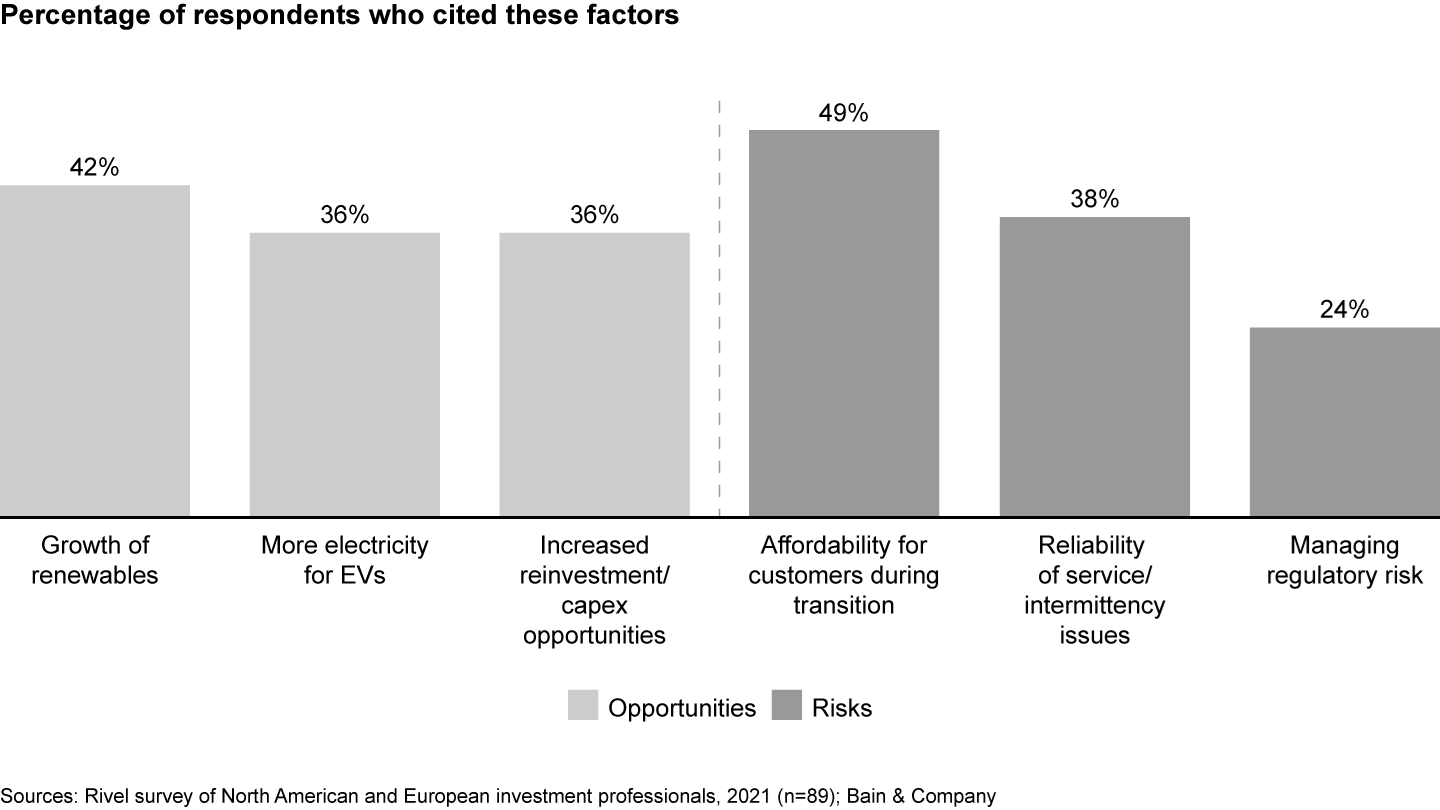
Investors want leadership teams that can:
- capture opportunities from the growth in renewable power generation;
- accelerate electric vehicle adoption; and
- maximize returns for every dollar of capital deployed.
In order to do this, executive teams need to mitigate three critical risks.
- Affordability for customers
- Reliability of service and intermittency issues
- Regulator and stakeholder risk
The investors we interviewed believe in the utility sector and the stability of the utility model (see Figure 2). The most commonly cited factor determining investment decisions is management credibility (93%).
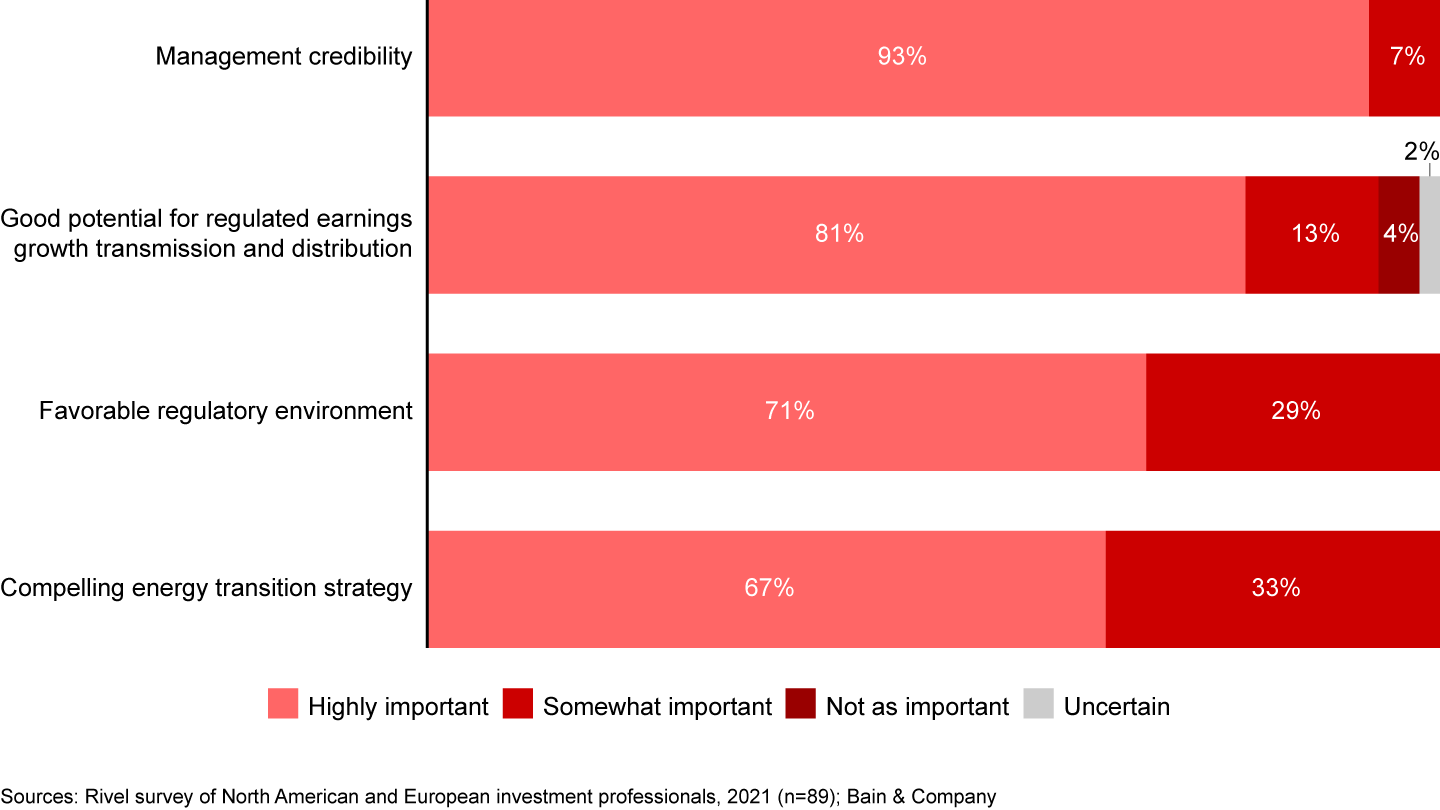
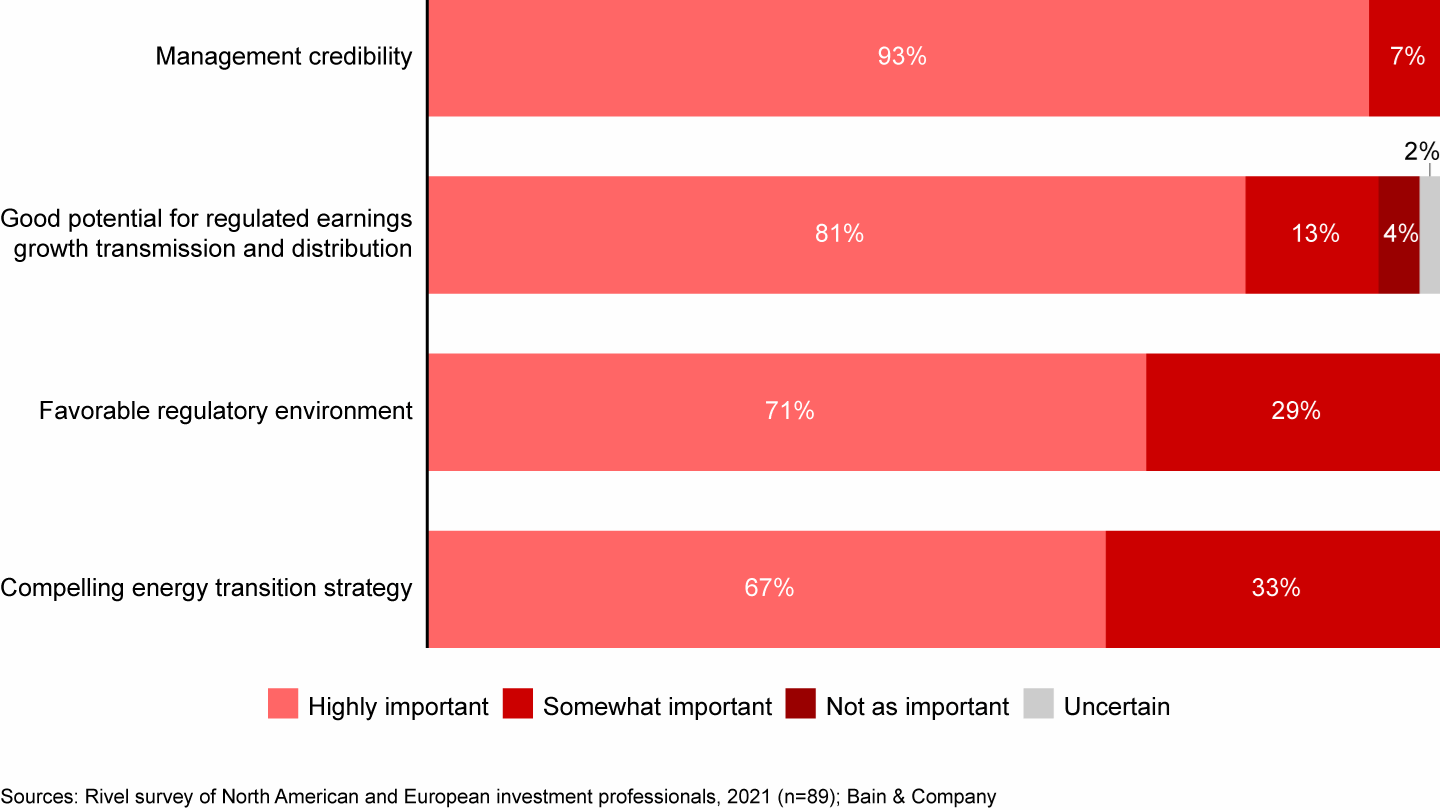
Investor and analyst perspectives on oil and gas
Over the past 18 months, the oil and gas sector has witnessed a landmark set of shareholder votes, a critical court ruling directing Shell to accelerate carbon reductions, the COP26 climate conference, and the expansion of net-zero financial alliances. At the same time, commodity prices have surged, pressures to expand production have intensified, and oil and gas companies’ share prices have outperformed broad indices.
In this dynamic environment, three core messages emerged from our discussions with investors and analysts that should have long-term resonance for oil and gas executive teams. First, investors and analysts are clearly looking for oil and gas executive teams to remain focused on cash generation and maintain disciplined deployment of capital. Of the 10 factors we tested in our conversations, oil and gas production growth was the least important factor determining investment decisions (see Figure 3).
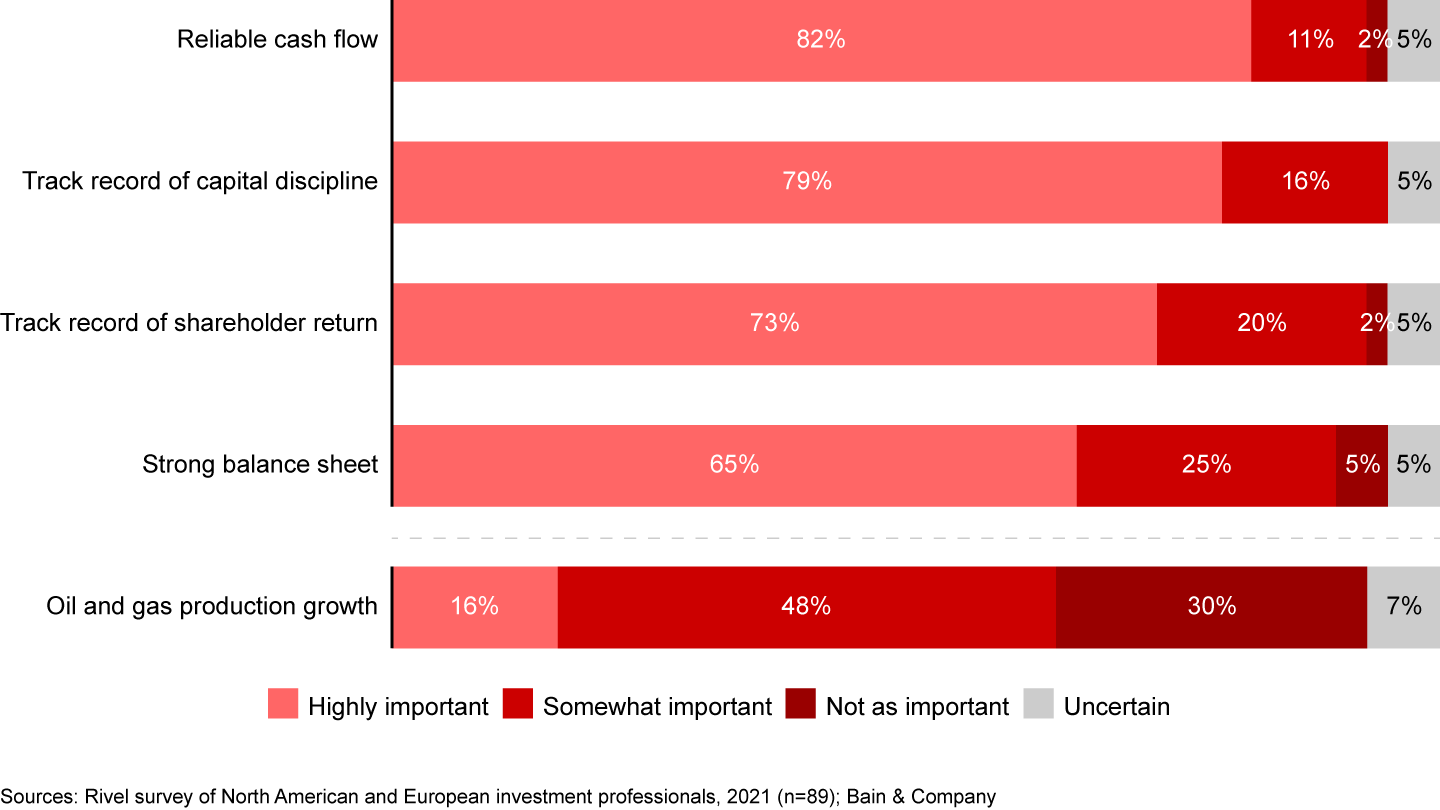
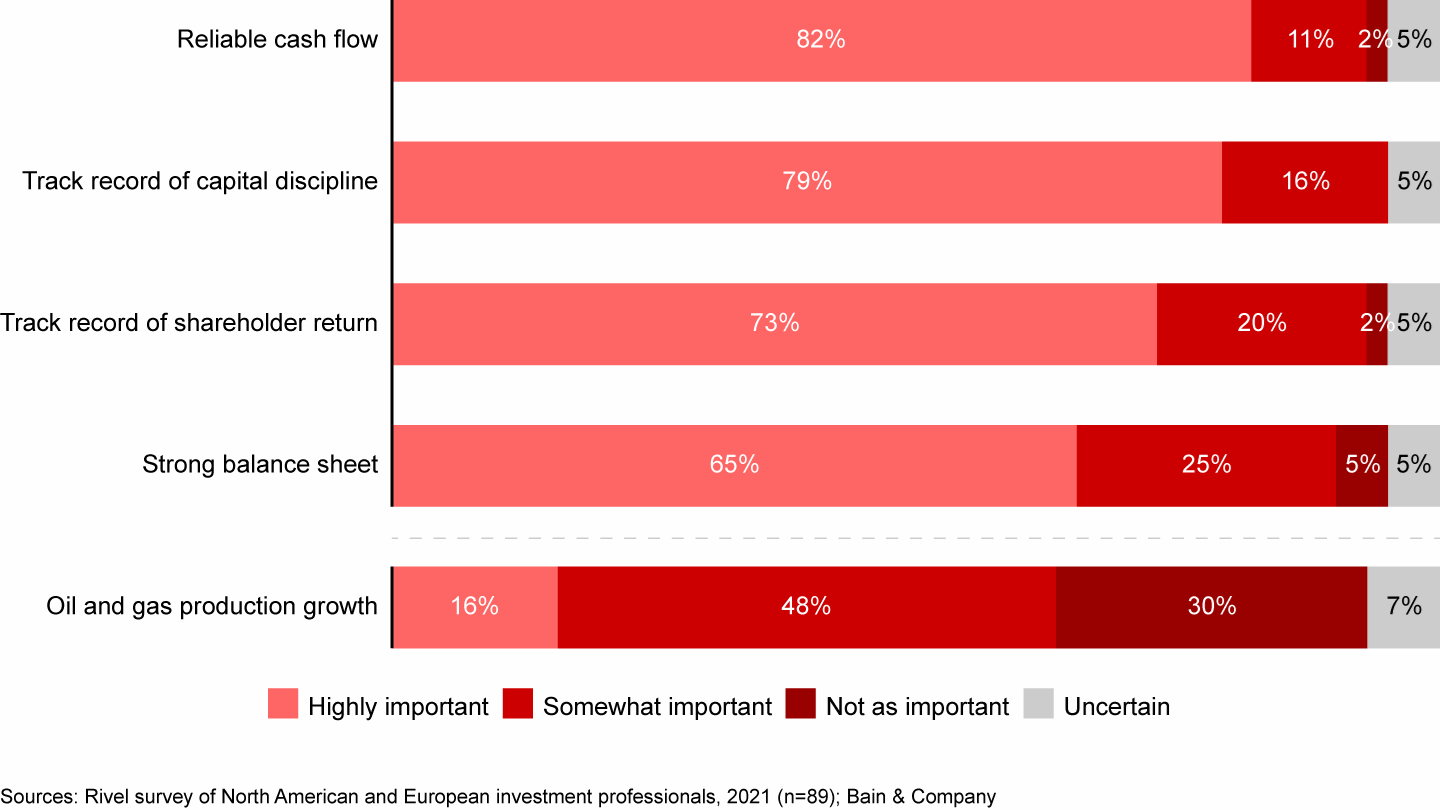
Second, investors see both opportunities and risks associated with how oil and gas companies respond to the energy transition (see Figure 4). They see the potential to use the industry’s capabilities in new, lower-carbon markets, but they’re also concerned about how capital is allocated. Demonstrating how strategy and execution respond to these perspectives should be at the center of oil and gas strategies and investor communications.
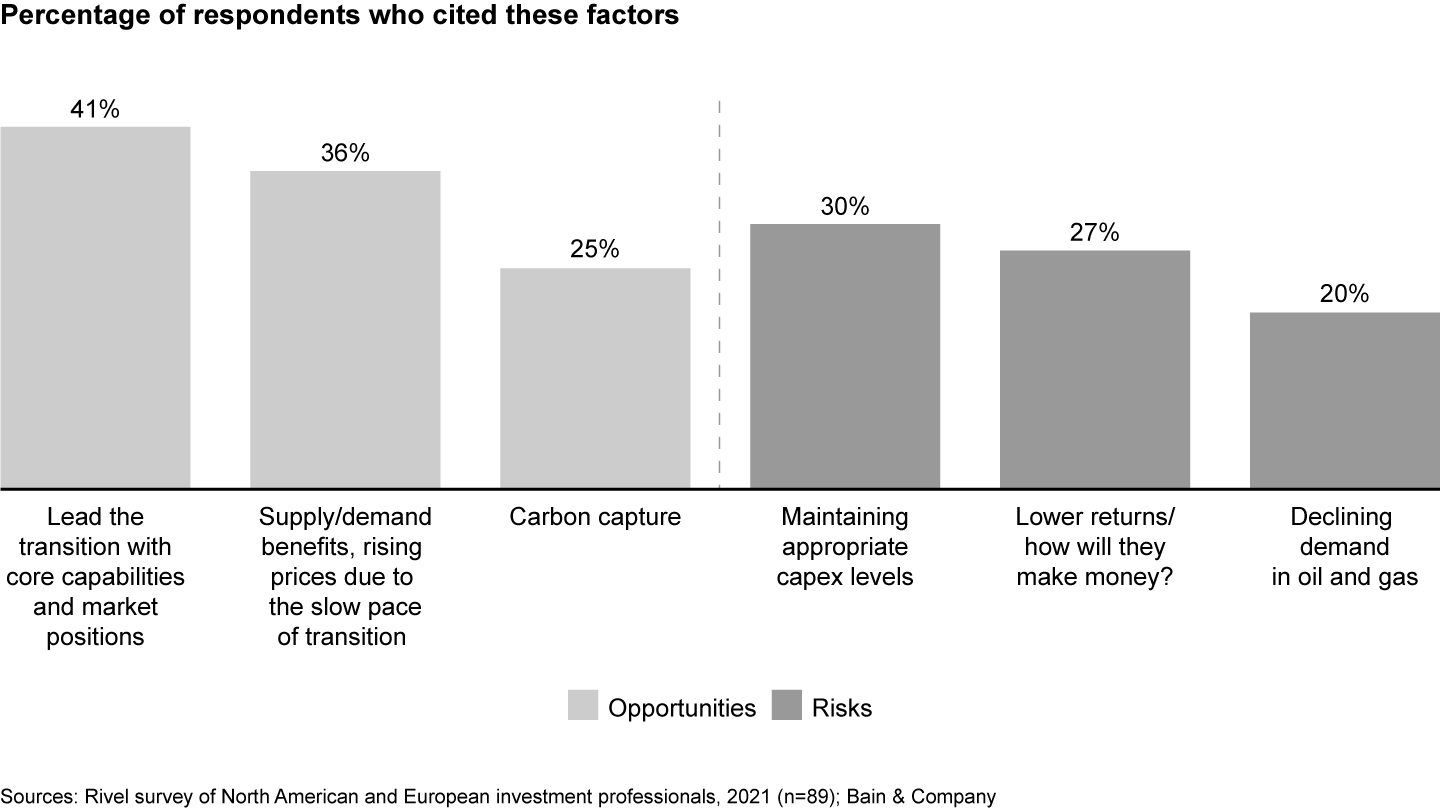
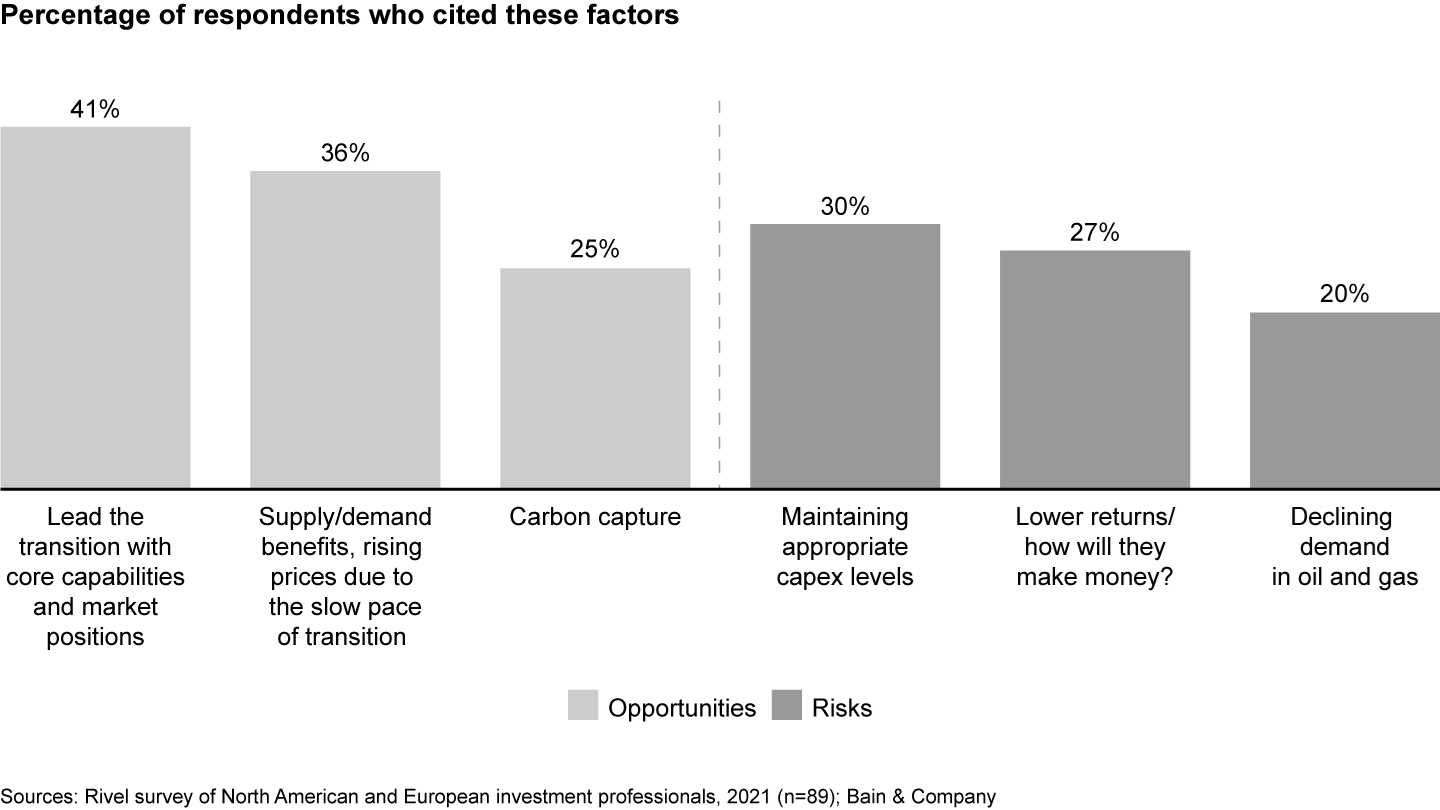
Third, investors are open to oil and gas companies participating in lower-carbon markets (see Figure 5). In the context of uncertainty about the pace and shape of the energy transition, there’s value in showing investors the company has plans for growth in a lower-carbon world.
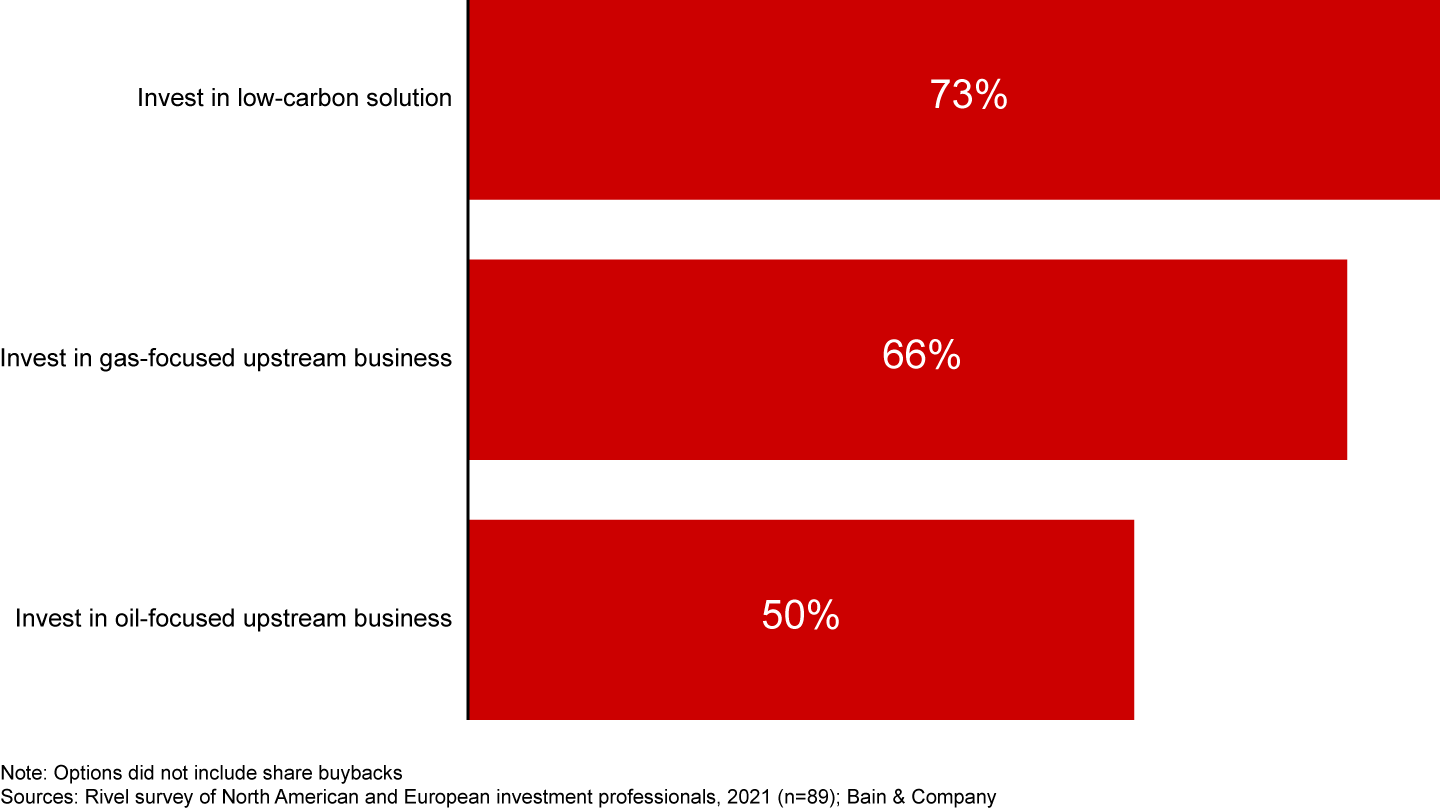
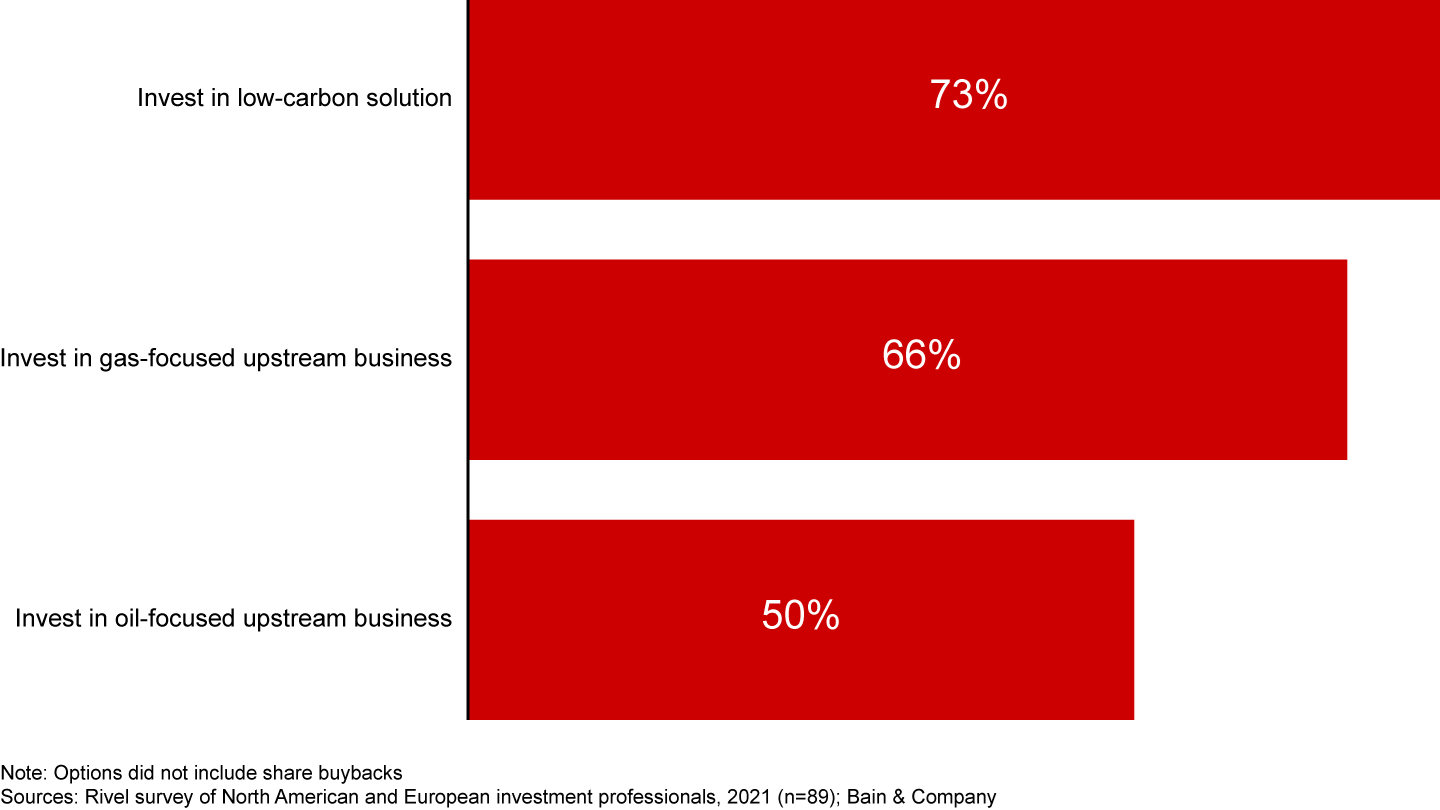
Rules and limits in portfolios: carbon budgets and ESG
We’ve been wondering about carbon emissions and whether they play a consistent role in portfolio construction. We’re specifically interested in potential portfolio rules governing carbon emissions, and efforts to target and reduce them. To learn more, we asked a series of questions to uncover possible changes in investor decision making.
We learned that nearly 20% of utilities investors and 13% of oil and gas investors have fixed, emissions-based guidelines that use limits or exclusions in their portfolios to set parameters for what they can own (see Figures 6 and 7). When asked about carbon limits or reduction targets in portfolio guidelines, 13% of utilities investors and 6% of oil and gas investors reported already having such goals. In both sectors, 16% of investors are considering limits or reduction targets.
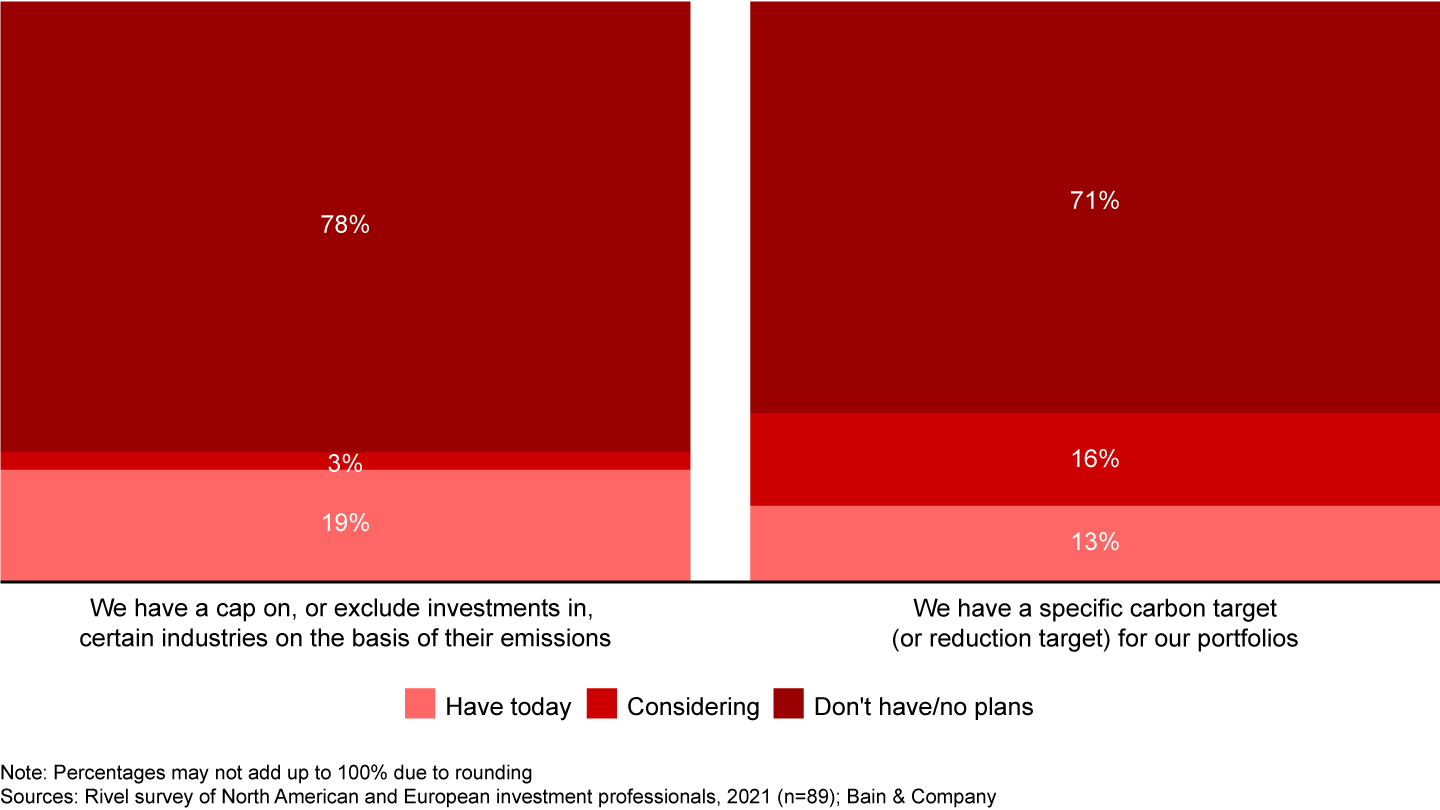
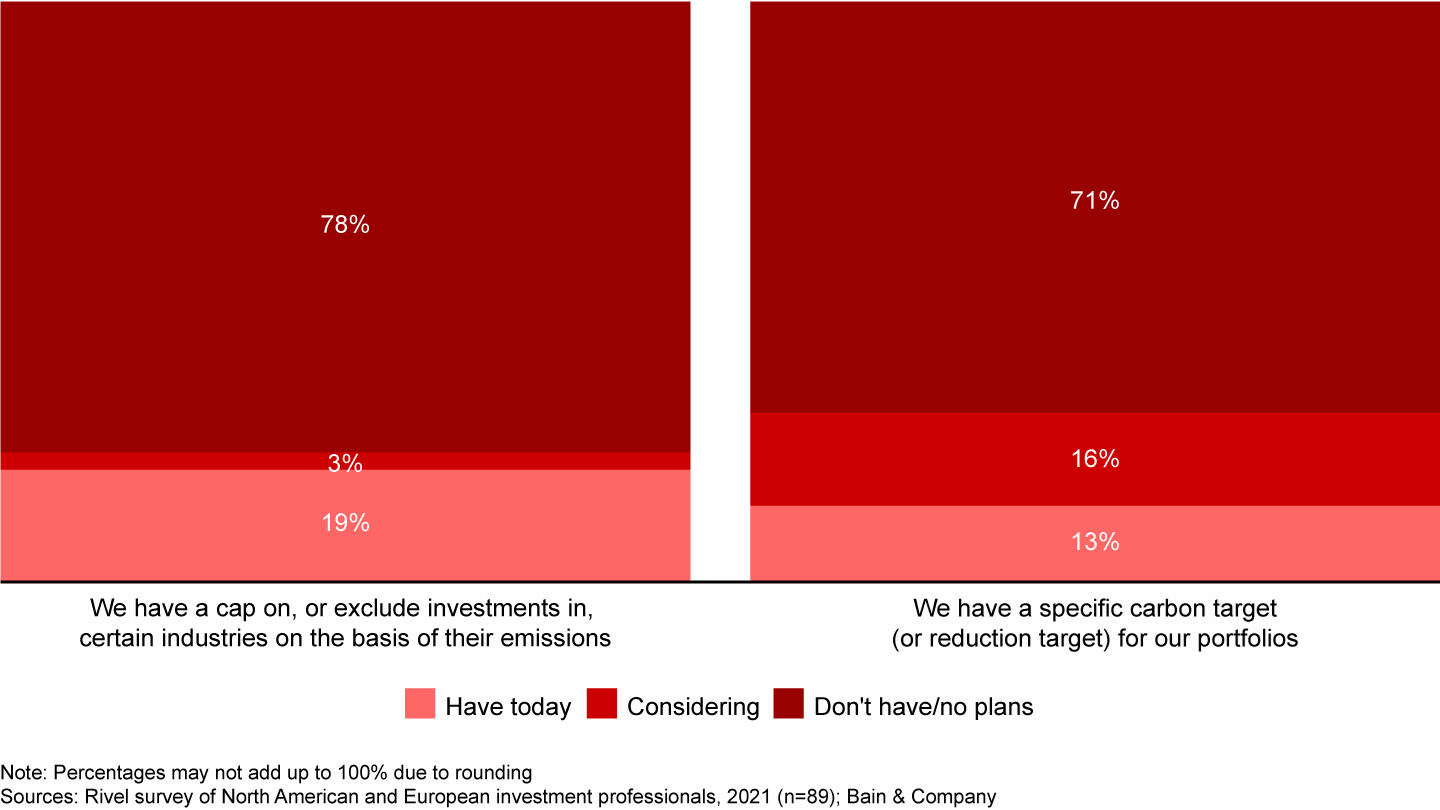
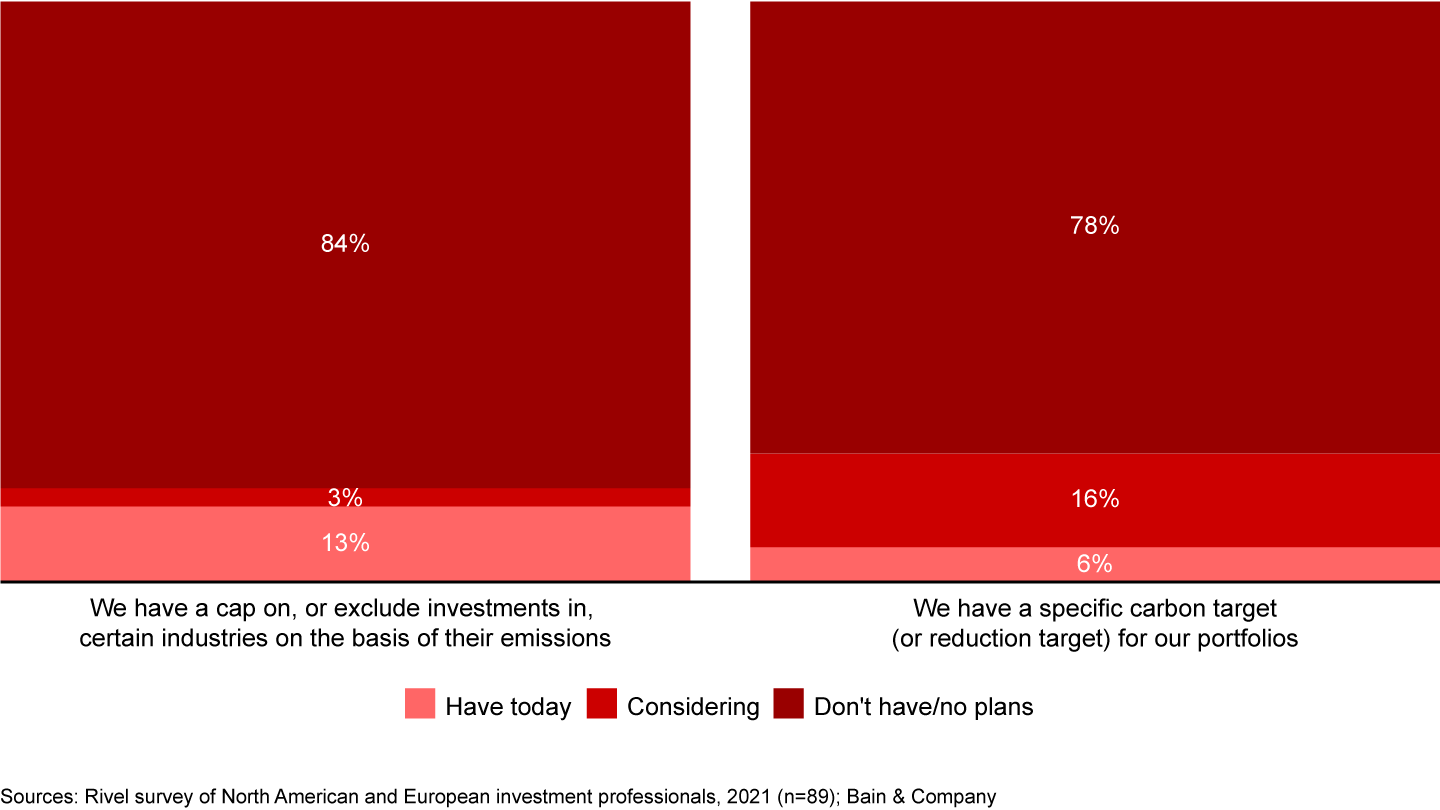
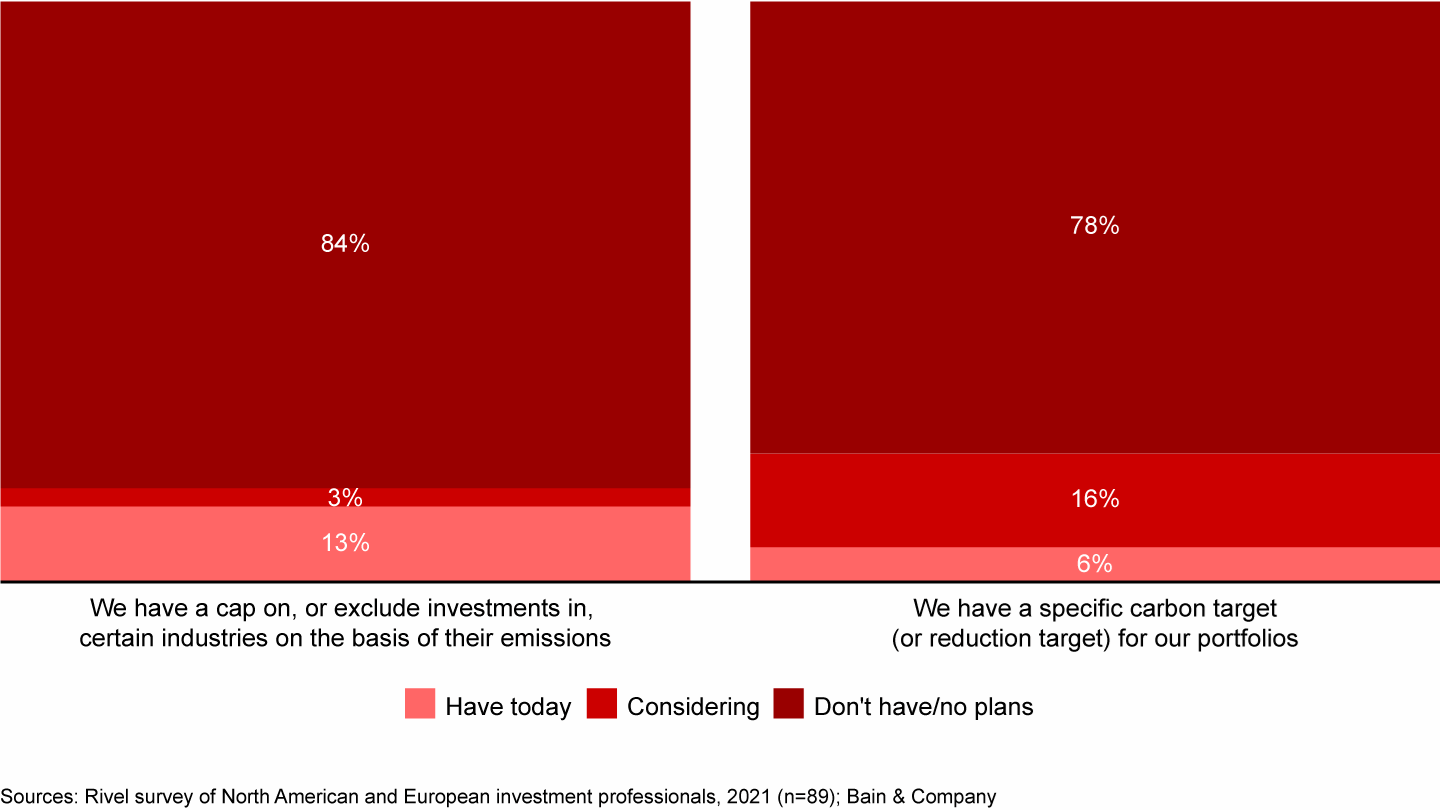
While carbon limits aren’t a determining factor in portfolio decisions today, we found it important to learn that some investors are considering it for the future—and not just in these two sectors, but across investment choices.
The investors we spoke with give ESG prominent consideration in their investment decisions, but there are differences in how important they believe these factors are and how they use ESG ratings and rankings in their portfolios. More than 70% of investors across utilities and oil and gas described ESG as either very important or important (see Figure 8).
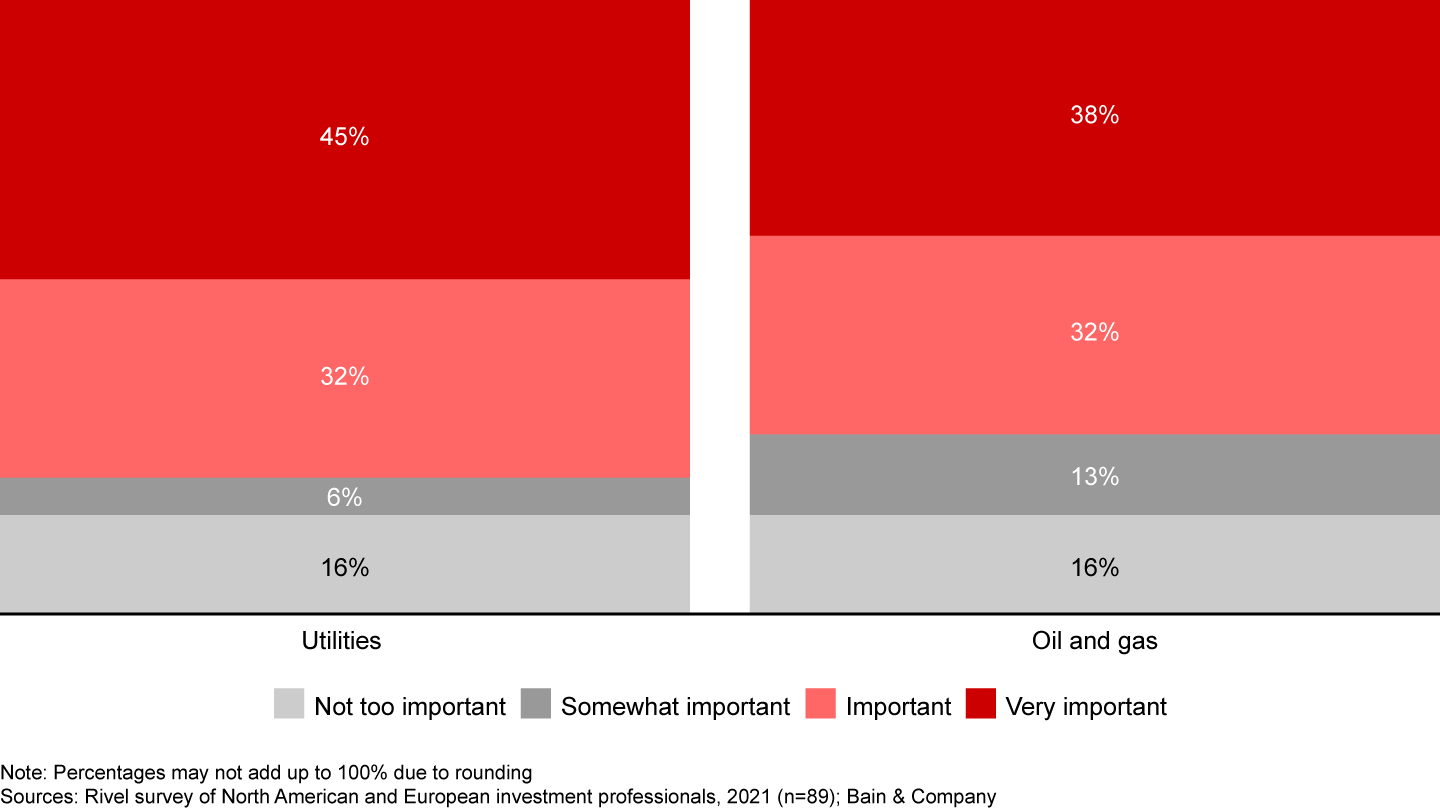
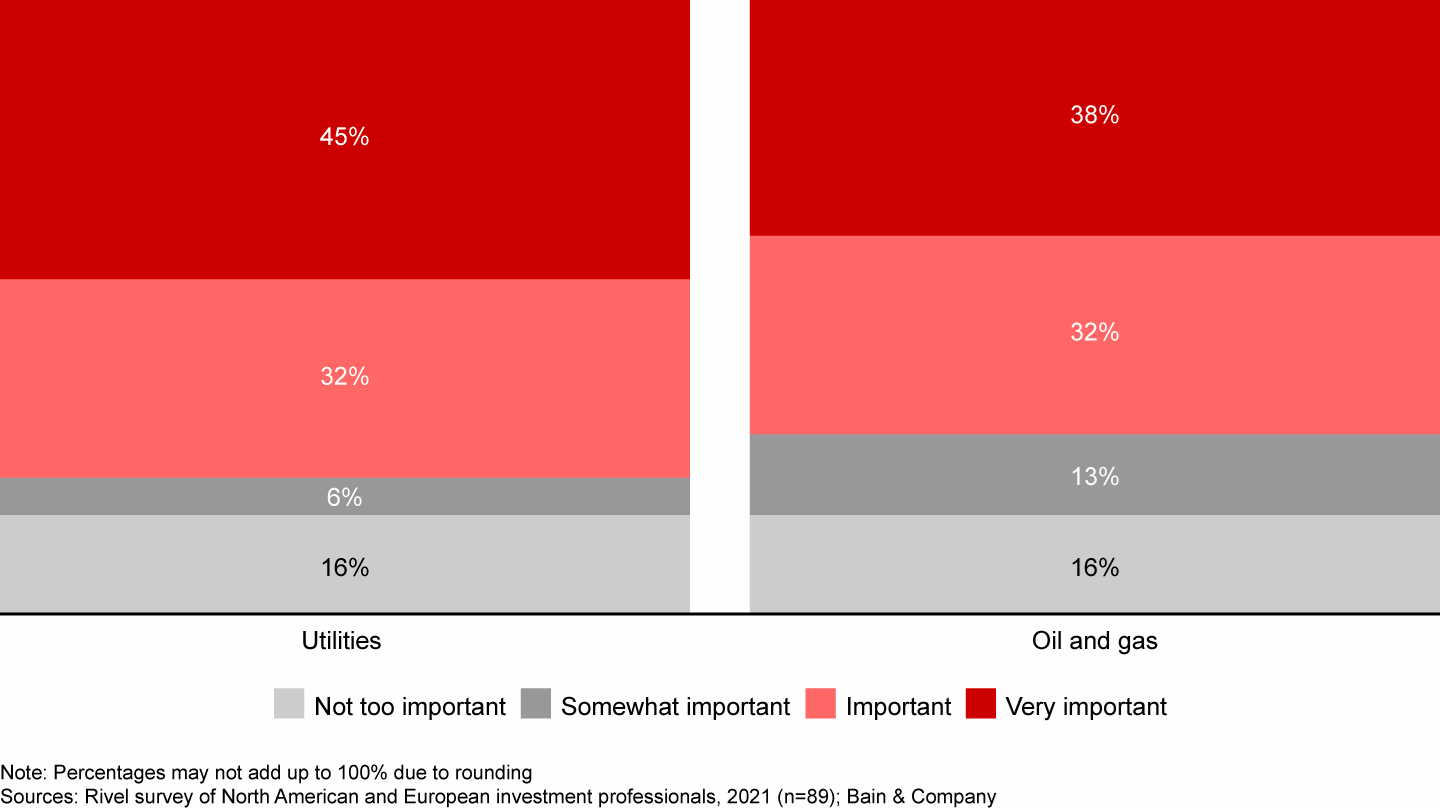
ESG ratings are sometimes used to create rules and limits. Utilities investors are more likely to embed ESG ratings into portfolio decisions: 29% vs. 10% of oil and gas investors (see Figure 9).
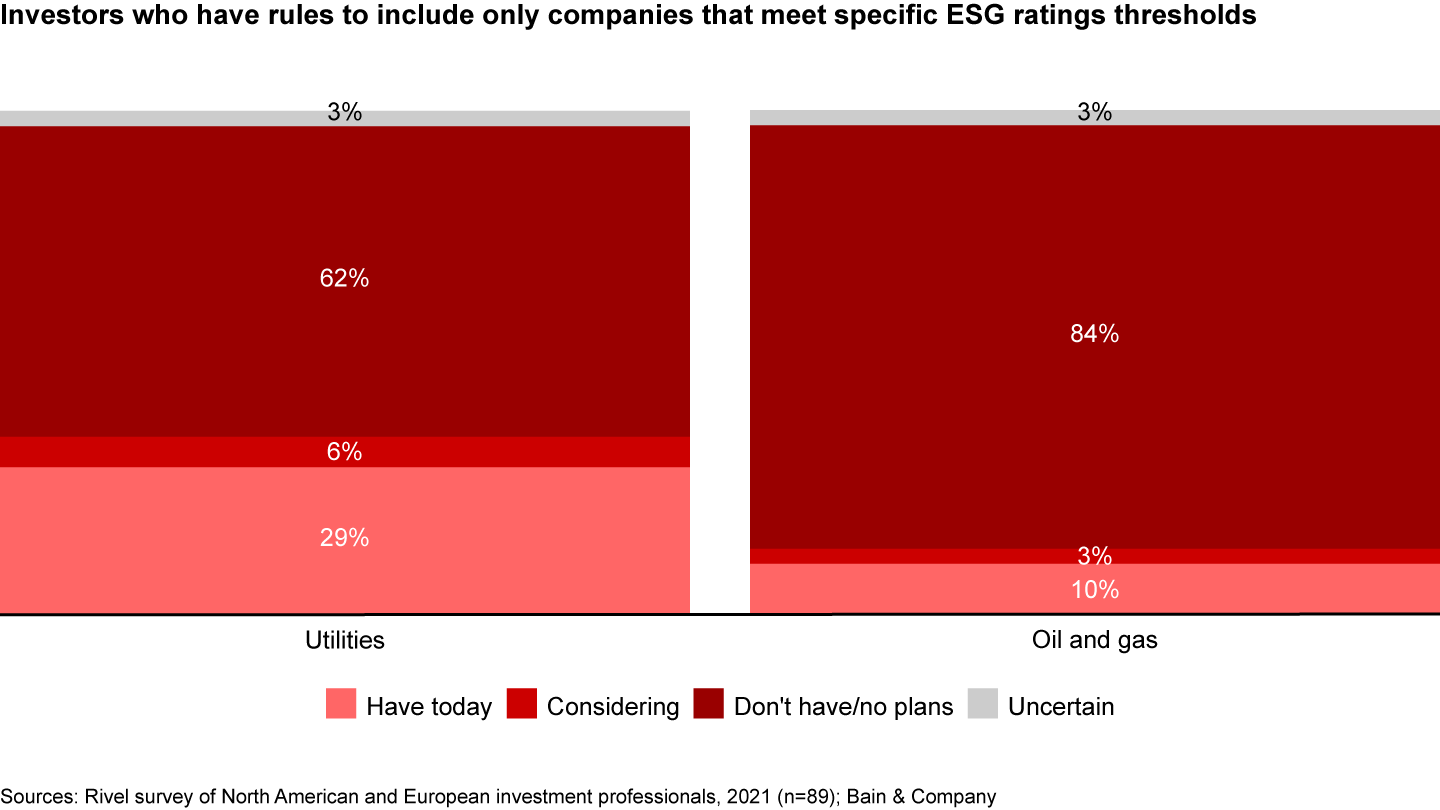
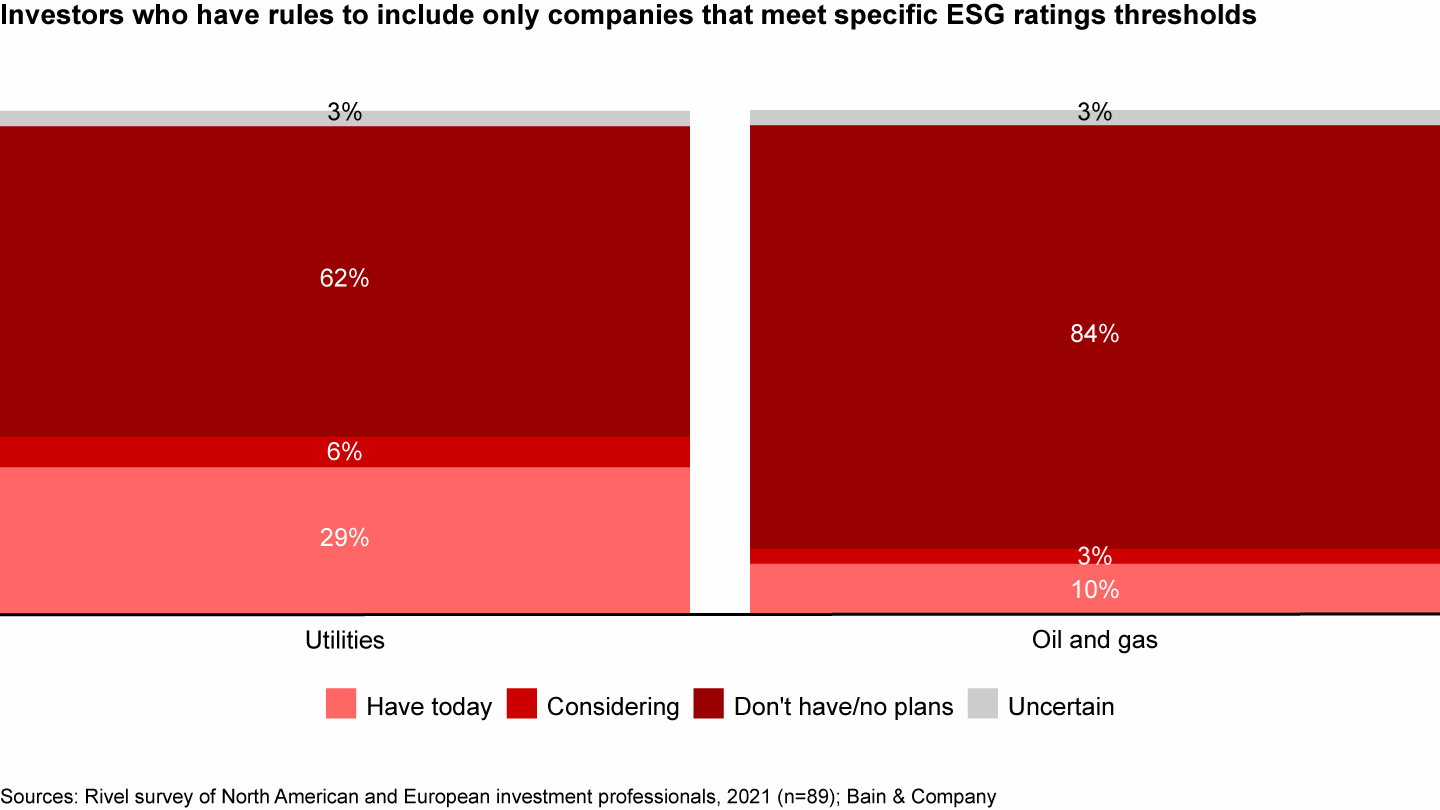
For executive teams, the mission on ESG is clear: Demonstrate real progress and consider a world in which carbon limits and exclusions are broadly adopted by some investors.
The path forward
Our research with Rivel shows that the energy transition is increasingly central to how investors and analysts view energy and natural resources.
For utilities, this is the time to be on the front foot with investors and to deploy bold, innovative strategies to enable more investment in their jurisdictions. Oil and gas companies, on the other hand, will want to manage and evolve their investor value propositions carefully. Investors are looking to the sector to generate cash; some companies may exploit near-term demand for oil and gas to build capital. Investors are waiting to see if the capital will be returned or used for transformative change.
For executives in both sectors, embarking on any new, low-carbon energy businesses will require a clear connection to the principles of the core business. Now more than ever, they’ll need to show how their capabilities, expertise, and customer relationships make them the best owner of the new business.
These findings represent a snapshot in time. The capital markets and energy transition landscapes remain dynamic. How will asset managers in the net-zero financial coalitions incorporate ESG, carbon, and science-based targets into their investing decisions? Will certain companies or categories of energy infrastructure become less “investible” as a result? What happens then, to individual companies and energy markets? (For more, see the Bain Brief “Managing Stranded Costs on the Long Road to Net Zero.”)
Executive teams should stress-test their strategy and decisions against the answers to these questions, while keeping a close watch on developments in capital markets.